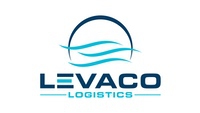Moving supply chains out of China is not easy.
There has been a lot of recent buzz about companies relocating sourcing or manufacturing out of China and it’s easy to understand why.
Supply chains are running at full steam as the economy is booming in parts of the world, while in other parts of the world, economies are taking a hit from obstacles to open commerce and trade. Protectionist trade policies have led to new tariffs (actual and potential) and the accompanying cost increases have led to a general attitude of trade uncertainty, specifically between the U.S. and China.
77% of US importers consider shifting production
According to an Amber Road and AAEI 2018 report on Trade Trends, 77 percent of U.S. importers surveyed consider shifting trade policies as their top challenge for the road ahead. As well, more than half of these companies also rank the cost of goods sold as their top concern. These higher tariffs add to the total landed cost, eventually affecting the price on the shelf.
For decades, China has dominated supply chains, with most manufacturing countries following a “China Plus One” strategy for sourcing, or diversifying their operations by adding another location in Asia. But many recent reports suggest that China’s growth has weakened because of the volatility.
Every industry is affected
China’s production numbers are dropping and factory activity is slower than expected. In September, U.S. companies paid 54 percent more in tariffs year-over-year, and many are now recognizing the importance of diversifying their supplier base to more than just “plus one.” In fact, more than 60 percent of apparel companies are now sourcing from at least 20 countries, according to the U.S. Fashion Industry Association’s report. And in the automotive sector, BMW has moved a part of its auto production to China to avoid the retaliatory China tariff to its imports previously manufactured in South Carolina.
This trade volatility and disruption affects every company and every industry. The fact is, global trade volatility can carry a hefty price tag for more than just tariffs. It can drive up the cost of raw materials, manufacturing, transportation, duties and tariffs—and ultimately increase the prices paid by consumers.
Popular alternative countries popping up to replace China
Supplier diversity is a hallmark of business wisdom, but when companies add to their supplier base it introduces other variables that can offset the benefits of simply leaving China and its uncertainty behind. For instance, labor costs are by no means fixed, and in many countries that are popular substitutes for China sourcing–Bangladesh, Vietnam, Mexico–labor costs are expected to rise between 5 percent and 16 percent in 2019. In Bangladesh, labor costs are expected to increase by 51 percent in the coming months.
Another key consideration for companies is that, even if they move production out of China, they’ll only avoid potential tariff costs if specific conditions apply.
Moving out production can be costly
For instance, if certain components of the finished product or a precise amount of the raw materials ultimately originate from Chinese facilities, or certain processing takes place in China, companies may still incur the full cost of the tariff—on top of the cost of relocating and establishing operations in a new location. It may be difficult to find partners in other countries that can manufacture to the same quality standards as their Chinese counterparts, so some companies may find the opportunity cost of moving out of China to be too high.
In extreme cases, brands themselves can lose significant equity because of quality issues caused by their choice to switch suppliers. To make this even more challenging, consumers are demanding to get the product in their hands faster, increasing costs of production and fulfilment, and the real-world application of emerging technologies.
Tariff engineering under consideration
To avoid this, companies need to take a holistic look at their sourcing strategy with all relevant factors considered. Often this means examining the product’s Bill of Materials (BOM), which gives a complete and hierarchical listing of any raw materials, sub-assemblies, components, or ingredients and the quantities and costs used in the product. Companies must then check the materials they use against tariff specifications to ensure the costs they’re trying to avoid by sourcing from China are actually avoided. In some cases, shifting production from China could actually yield a net increase in costs.
This is often called “tariff engineering,” a practice that starts during product design and involves sourcing teams to identify raw material providers in countries that will allow them to avoid a tariff increase, hence reducing the overall product cost.
Implementation of punitive and retaliatory tariffs is critical
It is critical to be tuned into the geo-political topics that are impacting the direction of global trade and the implementation of punitive and retaliatory tariffs. Companies should consider how to react to these developments and brace for more changes that might come down the road. To stay ahead, you need up-to-date trade knowledge to pinpoint changes and digital supply chain execution technology to ensure goods cross borders efficiently.
At a minimum, the information you need includes current duty rates, accurate bilateral or multilateral trade agreements data down to the HS level, methods to identify which products have been targeted with what anti-dumping or countervailing measure, and more. Best-in-class businesses also need methods to track import and export trends as supply chains adjust in parallel to trade policy fluctuations.
Technology to identify productivity and minimize risk
Companies that want to get out in front of these changes can start by looking at the technologies and systems that will level up their profits and efficiencies, all while innovating and keeping up with demand and lowering liability exposure. Today’s trade policy landscape calls for leading technology that can help identify opportunities for growth, boost productivity, enable compliance, and minimize risk. That is a tall order in times like these.
©Daniele Smith – Sourcing Journal







